The earthy, umami-packed flavor of mushrooms renders them a valuable weapon in any kitchen arsenal. They’re rightly famous for their versatility, whether used as a pasta-sauce ingredient, a beef-patty replacement in a burger, or a hearty addition to a grilled-veggie platter, mushrooms blend harmoniously into a wide range of dishes.
Because mushrooms have such a multifaceted reputation, we found ourselves wondering whether there might be applications for these highly edible fungi that we’ve never considered before. We decided to turn to the experts for answers, and these chefs and mixologists offered up enthusiastic responses, including seven unique and unexpected ways to use mushrooms in your kitchen and on your home bar.
Chanterelle “Confit”
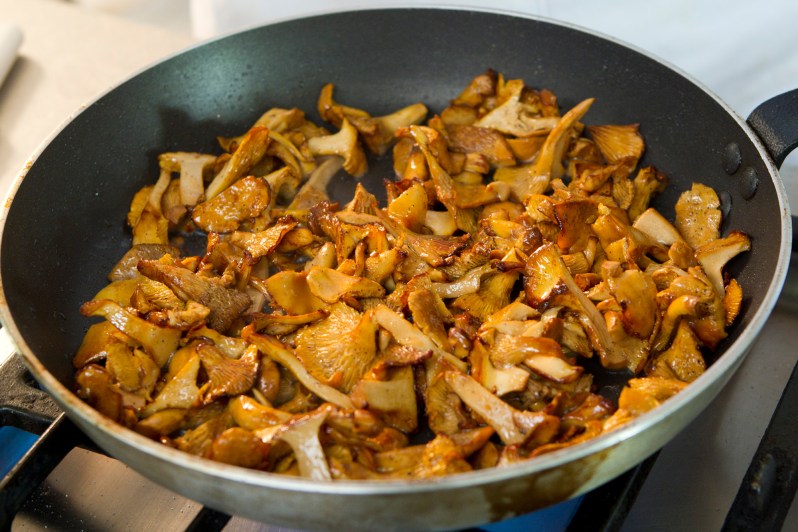
Traditionally, “confit” refers to meat that’s slow-cooked in its own fat, yielding a seriously tender end product. However, modern culinary parlance now applies the “confit” label to any food that’s cooked in fat for an extended period of time. Vegetable “confits” can be used as spreads and condiments, and the concentrated flavor provided by this cooking method works especially well for already distinctive items like mushrooms.
Oregon-based chefs and foragers Eric Bartle and Sara Kundeliaus of the Abbey Road Farm rank confit among their favorite ways to use the wild fungi that they find. “Confit is a way to cook or preserve a food in fat, you can do this with any [quantity] of mushrooms. To clean your mushrooms, either brush off excess dirt or spray with water [to clean], then rough chop and sauté in a hot dry pan until all their natural water is released,” Bartle and Kundeliaus explain. They then cook their mushrooms in butter at 115 degrees Fahrenheit for 4-5 hours, then either vacuum-pack or freeze the confit until they’re ready to use it. While they prefer chanterelle mushrooms for this recipe, “when it isn’t chanterelle season, you can use any mushrooms you like.”
Huitlacoche “Ketchup”
The Mexican delicacy known as huitlacoche consists of a fungus that grows on the ears of ripened organic corn. These “corn mushrooms” (or “corn truffles”) deliver a smoky-sweet flavor with an appealing undercurrent of funk, and that’s why executive chef Jesse Houston of Sophomore Spanish Club in Jackson, MS likes to transform them into a condiment that he calls “huitlacoche ketchup,” which he uses on his vegan mushroom tacos.
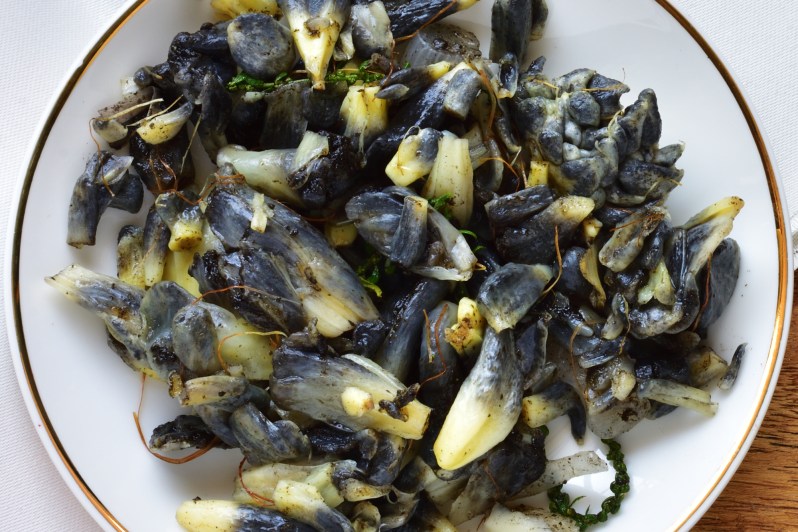
“Fresh huitlacoche is a bit earthy and definitely mushroomy. It is not like a truffle at all, even though it is given the ‘corn truffle’ nickname. To create ‘huitlacoche ketchup’, I [blend the huitlacoche with] mezcal and Mexican herbs and spices, culminating in a perfect condiment with a velvety smooth texture and smoky, earthy taste that really makes the taco sing!” Houston tells us.
Mushroom Compound Butter
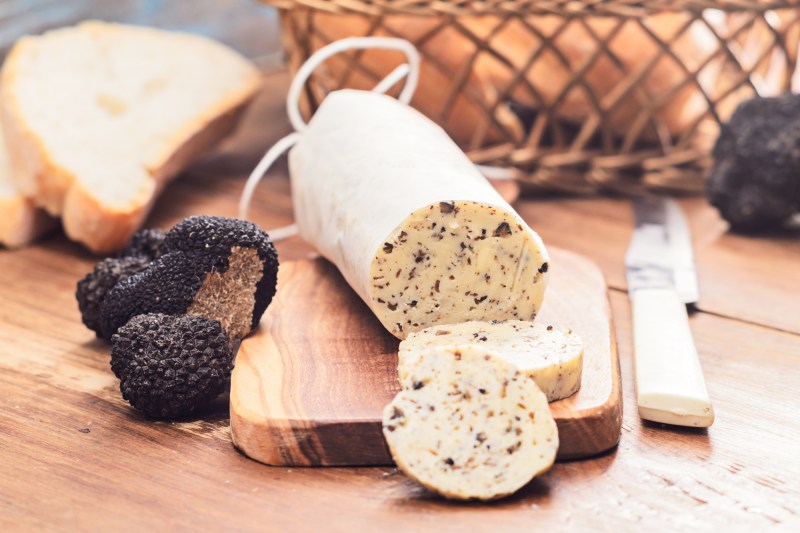
“Making a compound (flavored) butter with mushrooms is a delicious and foolproof way to amp up flavor in your cooking,” insists chef and co-founder Austin Orwasher of Bennett’s Butter Co. in Connecticut. Orwasher sees plenty of viable options for incorporating the mushroom compound butter into recipes, including the following:
“[Mushroom compound butter is] great for cooking all proteins; the savory flavor profile seeps into the thickest cuts of meats to transform them into a tender, tangy, and tasty treat. Whether used as a finishing butter on meat, in a risotto, atop vegetables of any kind for roasting, in eggs or omelettes, or for upgrading a grilled cheese, a mushroom-flavored butter provides the perfect blend of ingredients to elevate any meal without overpowering it. To make a mushroom butter, simply sauté mushrooms, onions, and garlic [until they reach a] beautiful golden-brown color, then drop in some liquid aminos and mix everything into [softened] butter.”
Black Trumpet Cocktail
Cocktails that contain savory ingredients appear on beverage lists on a fairly regular basis these days, whether those elixirs be vegetal liqueurs (like Cynar) or flavor boosters like mole bitters … or, as assistant manager Ryan Hauret of Sparrow + Wolf in Las Vegas suggests, a syrup infused with black trumpet mushrooms.
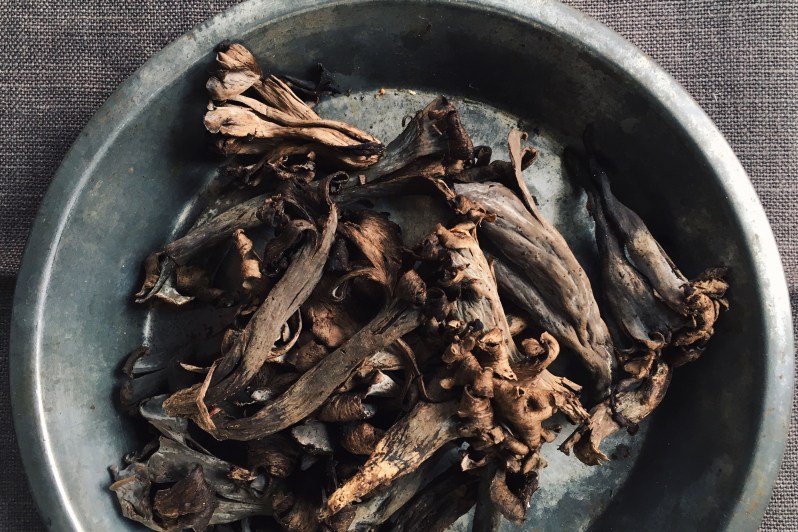
“The rich, smoky flavor of the mushrooms creates a really dank syrup, and the umami bitters tips off all the umami [in the mushrooms] and really ties it all together,” says Hauret of his Horn of Plenty cocktail, which includes a “black trumpet dashi syrup” made by boiling water and Demerara sugar, simmering to reduce, and adding mushrooms to steep for 30-45 minutes. He then puts Cognac, Amontillado sherry, the black trumpet dashi syrup, and a few dashes of umami
Truffle Negroni
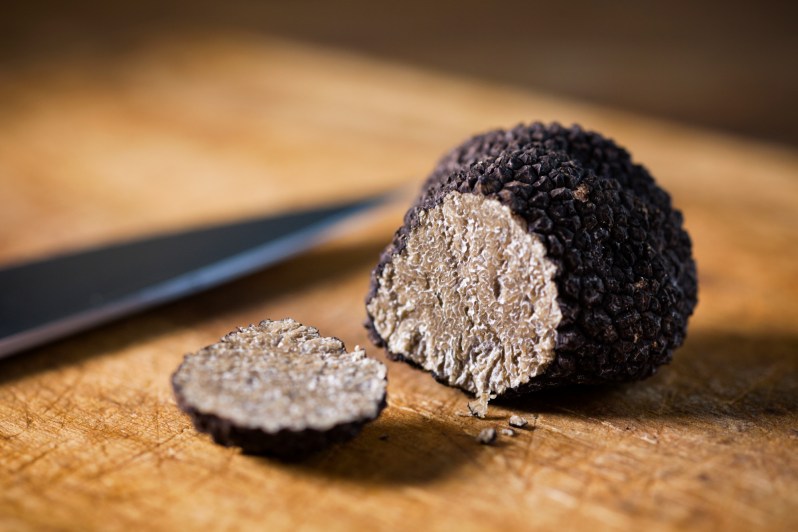
Truffles certainly aren’t a rare sight at upscale restaurants, but truffle-flavored cocktails have yet to achieve the same level of popularity as truffled pasta, truffled pizzas, or truffled risottos. But according to executive chef and owner Ken Frank of La Toque in Napa, CA, the unique flavor of truffles can offer new dimensions to every aspect of a menu. He even encourages his bar team to find ways to incorporate truffles into their cocktails, and he’s proud to include a Truffle Negroni among the signature beverages at La Toque. “While truffles are growing in popularity and their flavor is becoming more and more recognizable, their placement in this classic cocktail is sure to catch guests off guard in an unexpected, delicious way,” Frank says of La Toque’s negroni, which utilizes gin infused with high-dollar black truffles as its liquor base.
Porcini Ice Cream
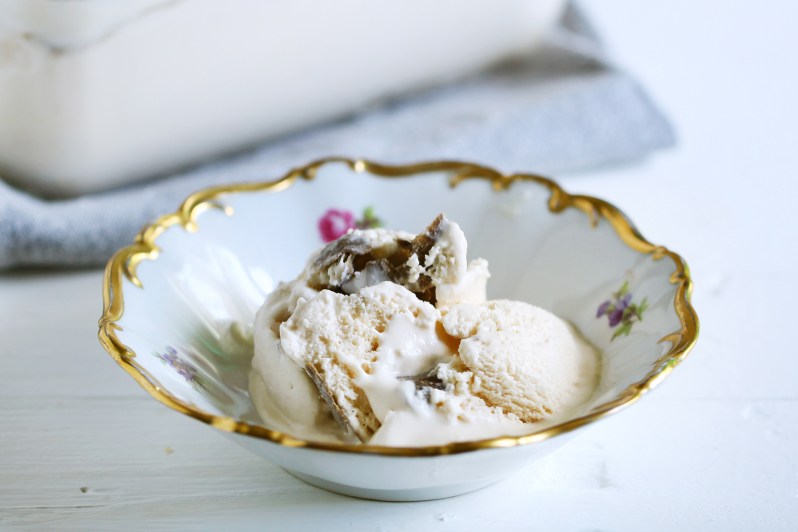
Mushroom ice cream may sound like a wild idea (or a Chopped challenge gone horribly awry), but chef David Santos of Good Stock and Um Segredo Supper Club in NYC urges naysayers to keep an open mind. “[At a past restaurant,] I used to make this dish called ‘A Walk in the Woods.’ It was porcini ice cream, pine needle pudding, maple cookie crumble and poached huckleberry. Porcini in particular has an amazing umami-driven undertone that I love. The earthiness of mushrooms goes really well with sweetness. Think of beets and how sweet and earthy they can be. Mushrooms do the same thing, but we don’t often think of them that way,” Santos tells The Manual.
Mushroom Flan
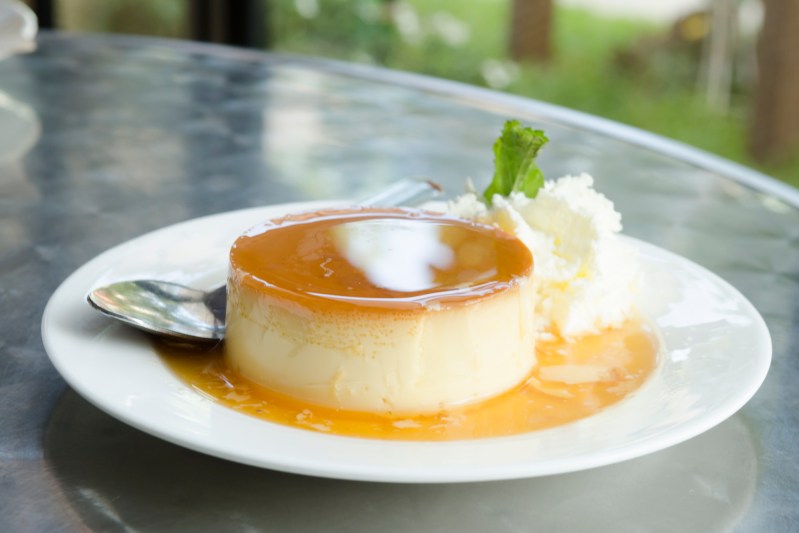
Based on their name, candy cap mushrooms seem like a fitting choice for a dessert-friendly fungus, and chef/owner Michael Beltran of Ariete in Miami fully signs off on that assumption, explaining that he uses candy caps to make a mushroom flan: “Flan is everywhere in Miami. Everyone’s grandmother makes flan here. I still wanted to offer flan at Ariete, but I knew it had to be different. Mushrooms aren’t typically found in flan, but by incorporating candy cap mushrooms, I’m adding a sweet earthy flavor that is extremely subtle, while adding texture to the base. To make the flan, I toast candy caps, pulverize them, then add them to the flan’s custard base with some cream cheese. I strain out any pieces, so you can’t even tell there are mushrooms in the flan. I serve it with a Sambuca crema that I make with creme fraiche and Sambuca liquor, and I top it off with a coffee crumble.”



